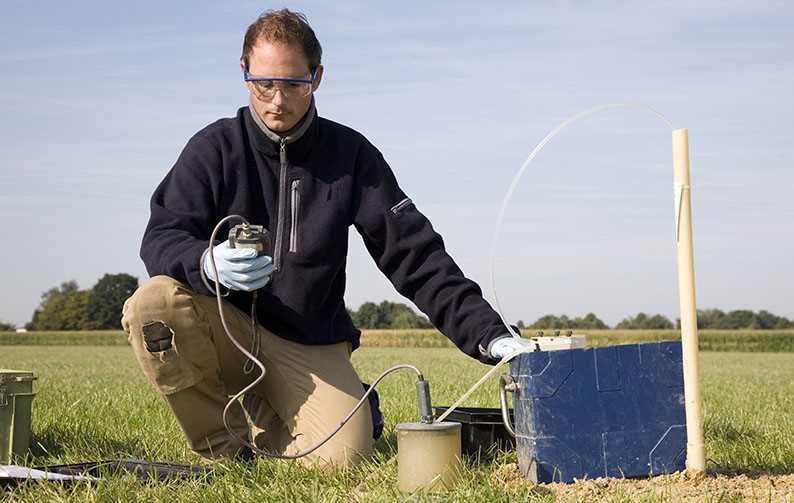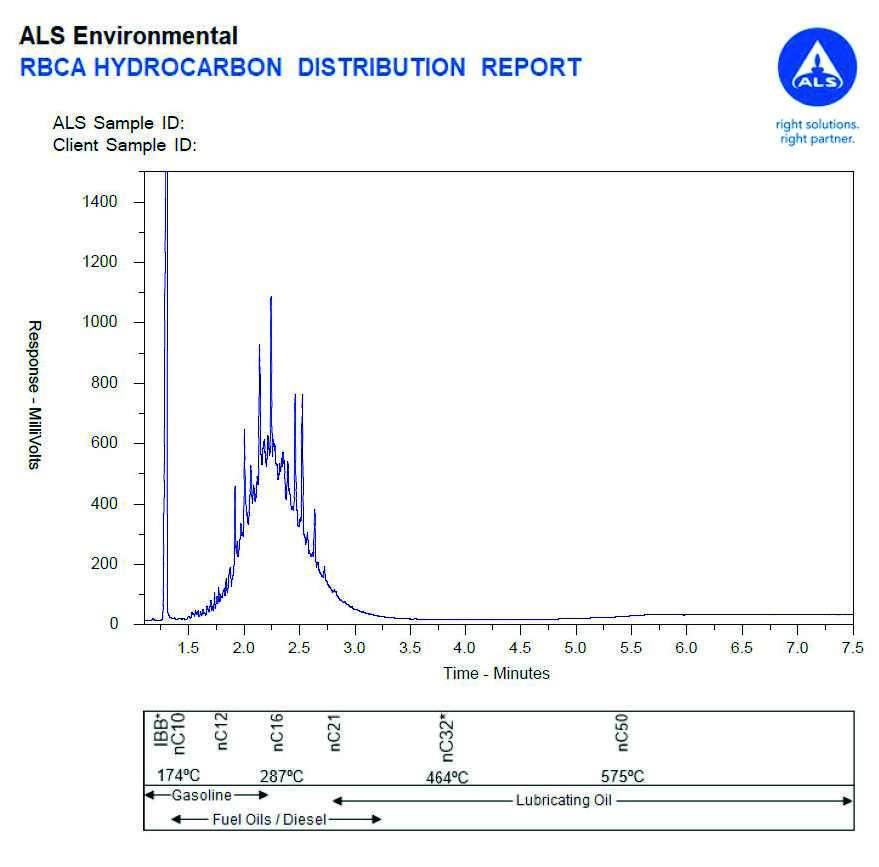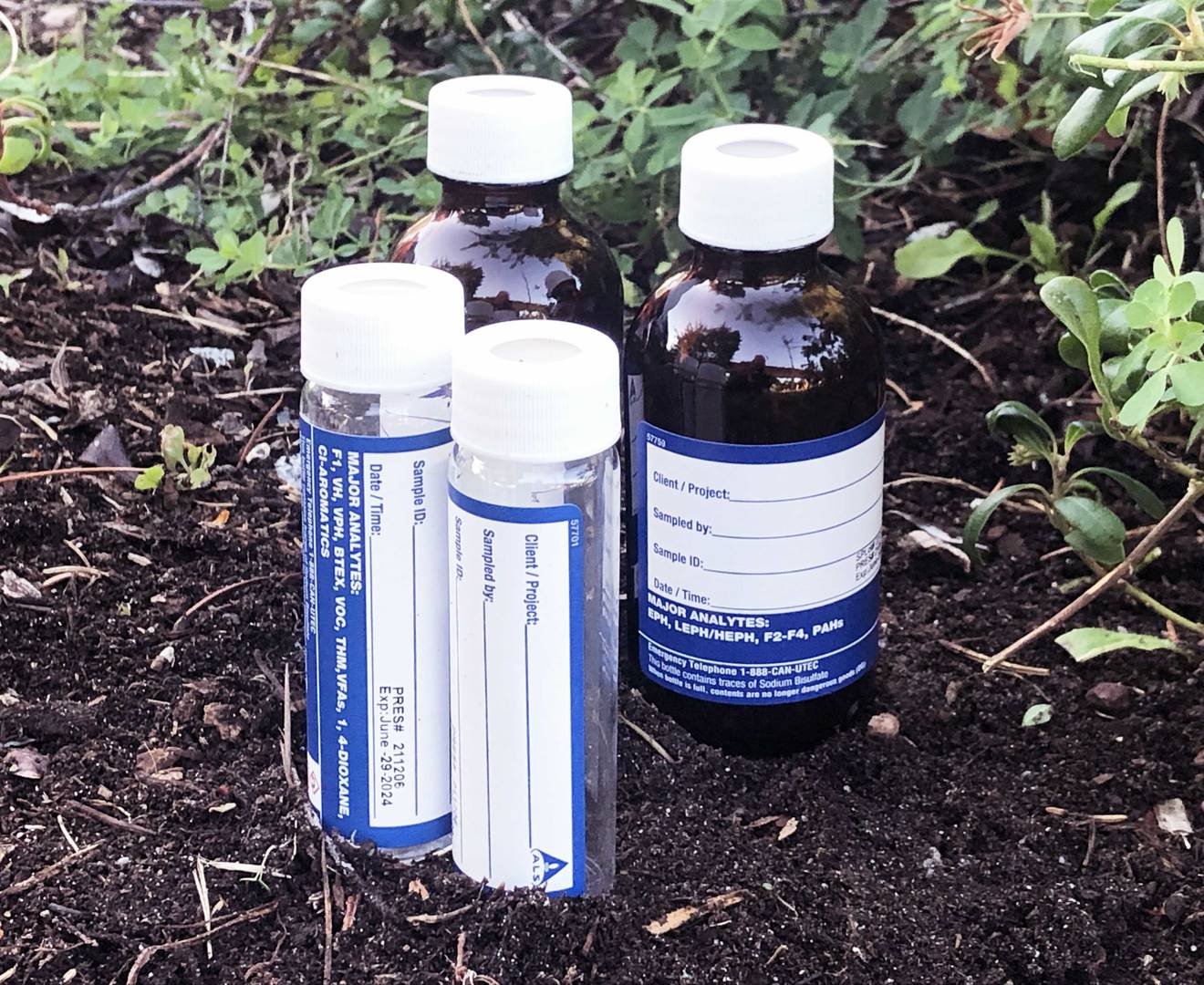EnviroMail 40 Canada
Simplifying RBCA Hydrocarbon Testing with Sample Miniaturization & Contaminant ID Tools
ALS Canada has simplified Atlantic Risk-Based Corrective Action (RBCA) hydrocarbon analysis by reducing water sample volumes required for Extractable Petroleum Hydrocarbons (EPH) testing, and by adding advanced analysis tools to assist with hydrocarbon contaminant identification.

Introduction
In Atlantic Canada, assessment and remediation of most petroleum hydrocarbon (PHC) contaminated sites follows the Atlantic RBCA process. ALS now offers RBCA hydrocarbon testing, using 100 mL sample bottles to meet all Tier 1 and Tier 2 EPH tests, as well as CCME hydrocarbon tests if needed. Reduction of EPH sample volumes to well below the industry standard of 250 mL (or as much as 1 L) simplifies sample collection efforts in the field, reducing sampling time, reducing sample weight, simplifying mobilization and transportation logistics, and reducing waste – all helping our clients to execute a safer, more efficient, and more cost-effective field program.
To assist with hydrocarbon product identifications, ALS includes Hydrocarbon Distribution Reports (HDRs) for all RBCA samples, and we routinely report the percentage of Modified TPH (C6-C32) represented by each hydrocarbon fraction. In addition, ALS routinely reports the C34-C50 fraction, to facilitate comparison with CCME hydrocarbon standards.
RBCA Test Method
The Atlantic RBCA laboratory method includes procedures for analysis and reporting of both volatile and extractable petroleum hydrocarbons (VPH and EPH) in soil and water samples, which are summed and reported as modified total petroleum hydrocarbons (mTPH). VPH is analyzed by Headspace – GC/FID, with simultaneous analysis of BTEX (benzene, toluene, ethylbenzene, xylenes) and MTBE (methyl tert-butyl ether) by Headspace – GCMS. EPH is analyzed by solvent extraction and GC/FID. The RBCA method provides Tier 1 and Tier 2 reporting options, depending on site characteristics and contaminant levels. Tier 1 hydrocarbons are reported in four “carbon-ranges” as a function of the retention times of n-alkane marker compounds. The Tier 2 method further fractionates the Tier 1 ranges into aromatic and aliphatic sub-fractions.
RBCA Versus CCME PHCs
ALS reports Atlantic RBCA test results as required by the reference method, with all hydrocarbon parameters reported for Tier 1 or Tier 2 as shown in Table 1.

Table 1. RBCA Hydrocarbon Parameters
In addition to the RBCA hydrocarbon ranges, ALS reports the C34-C50 range, which approximates the F4 fraction of the CCME PHC method. Inclusion of this parameter facilitates a more comprehensive comparison to both RBCA and CCME criteria. There are differences between the CCME and RBCA methods – for example the CCME soil analysis method includes a required silica gel cleanup, which is optional with the RBCA method. However, analytical test results generated by the RBCA and CCME methods for comparable ranges are considered to be consistent and generally equivalent. If requested, ALS can provide both the RBCA and CCME PHC results from the same set of sample containers.
Hydrocarbon Identification Tools
A core element of the Atlantic RBCA program is that the assessment/remediation screening levels are selected not only based on land use, but also on the type of hydrocarbon products present. RBCA petroleum hydrocarbon screening levels vary due to the specific ecological and human health risks associated with three common petroleum product types: gasoline, fuel oil, and lubricating oil. The Atlantic RBCA method requires laboratories to include a “hydrocarbon resemblance comment” for all samples with detected levels of mTPH. The results are then compared to the screening level selected based on land use and hydrocarbon resemblance for the sample.

RBCA Hydrocarbon Distribution Report
As a result, laboratories apply standard comments based on an interpretation of the chromatogram and analytical results, which help the end user to determine the type(s) of products present at a site, so the appropriate screening level can be selected. In addition to resemblance comments, ALS provides supporting information for each sample in the form of a Hydrocarbon Distribution Report (HDR) – a high resolution annotated chromatogram – to assist end users with assignment of hydrocarbon product types. To aid with interpretation of HDRs, ALS also provides a Hydrocarbon Library consisting of a comprehensive collection of chromatograms from varied sources of weathered and unweathered hydrocarbon products and common natural biogenic source materials. Lastly, ALS routinely reports the percentage distribution of the four mTPH fractions, as shown in Table 2, as a quick reference tool to support hydrocarbon product identifications.

Table 2. Example mTPH Fraction Distribution Report
Sample Collection and Preservation
Sample Collection and Preservation Sample collection guidance is provided in Table 3, including sample containers, preservation, storage temperature, and hold times. A single set of water samples, as shown, can be used for analysis of all RBCA Tier 1 and Tier 2 hydrocarbons, and also for CCME PHCs, PAHs, and VOCs if required.

Table 3. RBCA Sample Collection Details

Water samples for RBCA Tier 1 & 2 + CCME PHCs
Starting October 2022, ALS is offering ISO 17025 accredited RBCA hydrocarbon analysis for waters and soils at our Waterloo laboratory, with convenient sample drop-off at our recently established Halifax and Fredericton locations. RBCA analysis will be completed at the ALS Halifax laboratory in the future.
| ALS Halifax | 13-100 Wright Avenue, Dartmouth |
| ALS Fredericton | 17-900 Hanwell Road, Fredericton |
Please contact your ALS Project Manager or the ALS Halifax Laboratory at ALSHAClientServices@alsglobal.com for more information, or to arrange for sampling materials.
References:























































